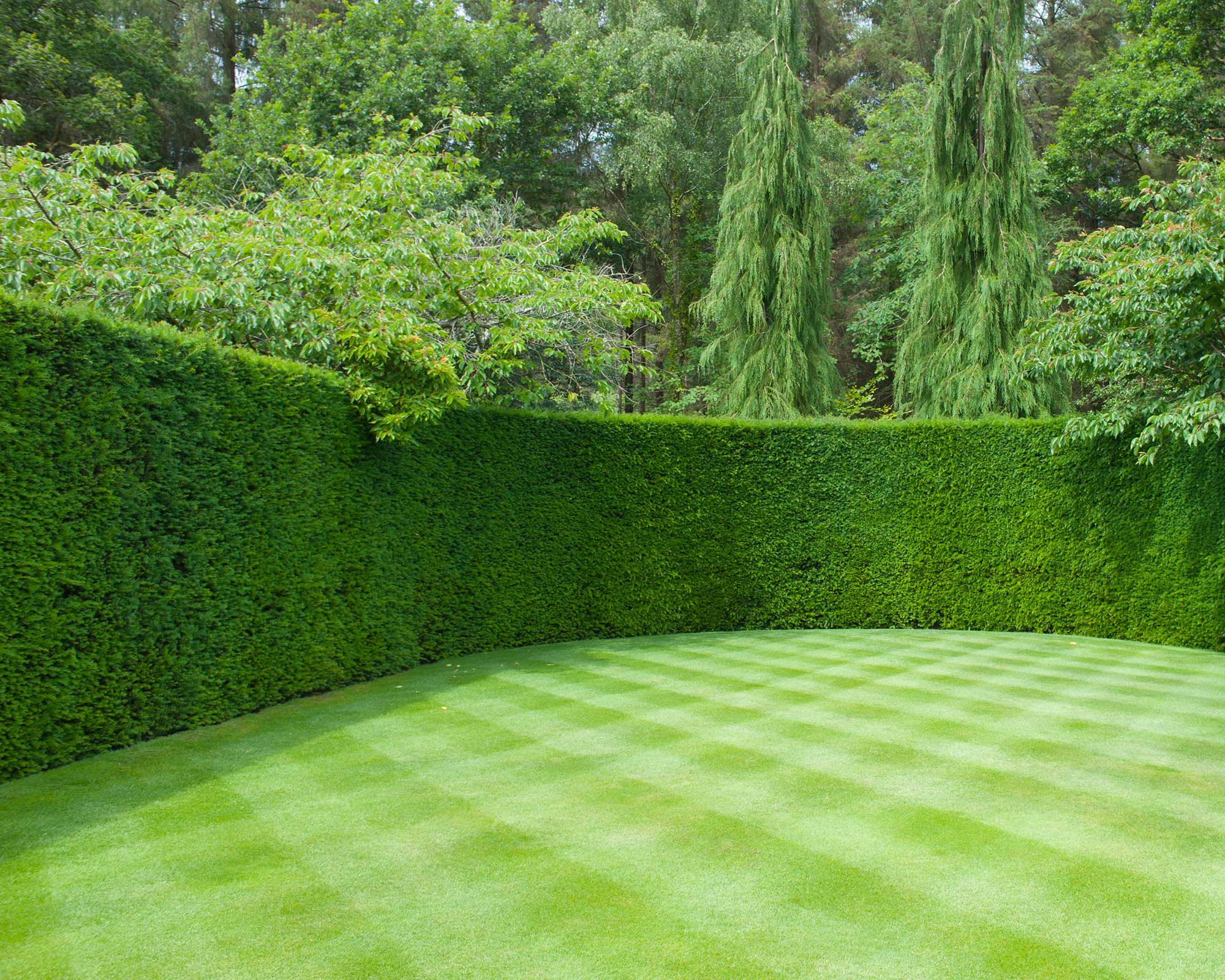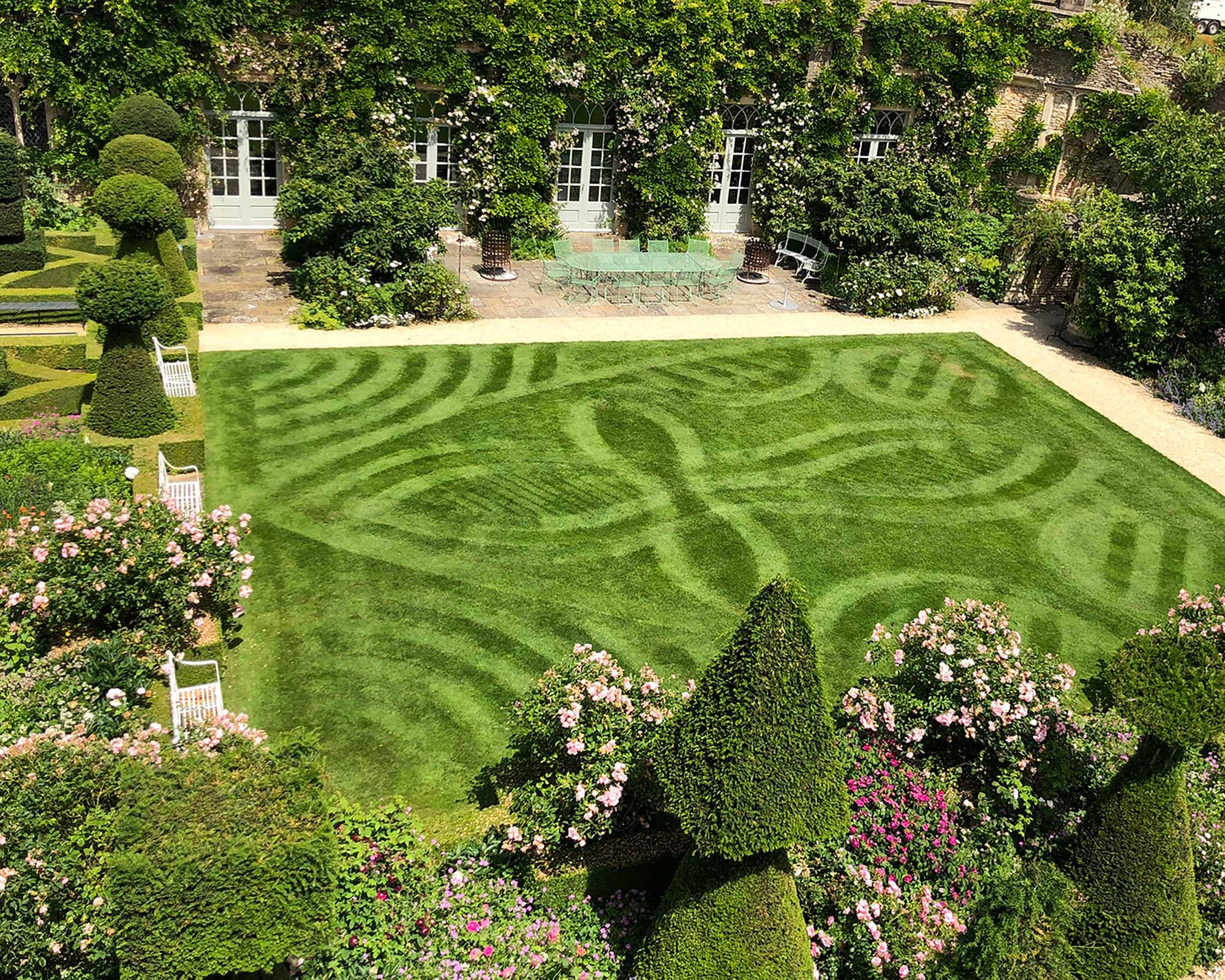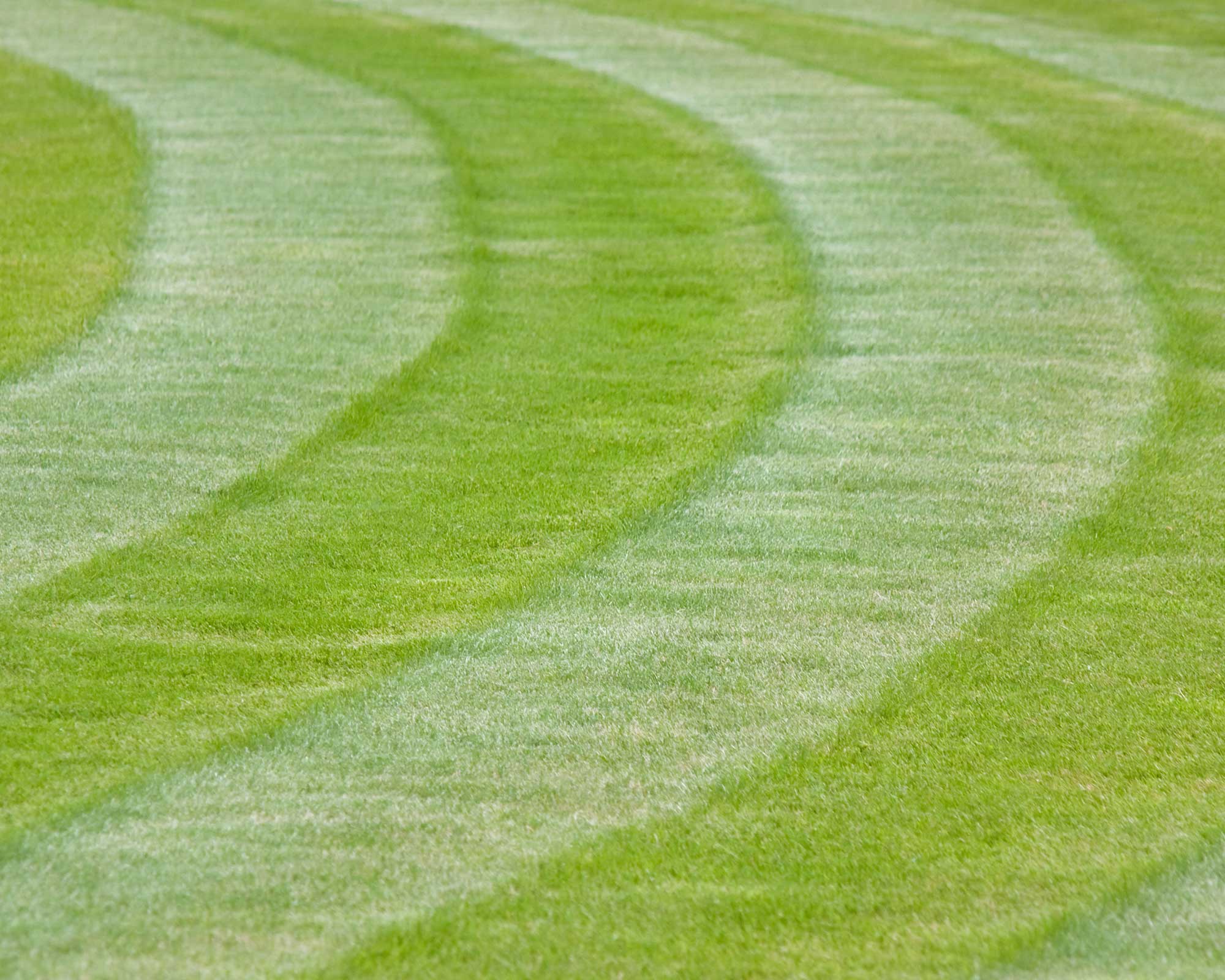Lawn mowing patterns: 6 inspiring designs plus tips on how to create your own
Lawn mowing patterns bring a touch of creativity to your garden's grass – we've got the lowdown on how to do it


Have you ever experimented with lawn mowing patterns? If you're feeling creative, they're a fun way to add personality to your plot. And, with the proper know-how and a little practice, it's not too difficult to create them.
With a roller attached to your mower and a bit of planning, you can bring a totally unique look to your yard. Different height settings and small, hand-held trimmers can also be used to create more intricate details.
And even if you only have a small plot, you can still have a go. As Andrew Wain, the Head Gardener of Euridge Manor and an expert in creating stunning lawn mowing patterns says, 'You don't need a big lawn to create an effective pattern.' So, why not mix your usual lawn care routine up a bit and give it a try?
6 stunning lawn mowing patterns for pepping up your plot
You may already know how to mow a lawn in the usual way, but adding in some unique designs is way more fun. And as these ideas show, the results can be spectacular.
1. Criss-cross

A criss-cross effect looks super smart and modern. And it's way easier to create than it looks, especially once you've invested in one of the best lawn mowers.
Just keep those lines as straight as possible and you'll be rewarded with a stunning result. We love how it elevates this incredibly green scene, adding extra visual interest that contrasts against the surrounding natural textures and forms.
The experts at Flymo explain how to do it:
- To start, mow the perimeter neatly around your garden.
- Next, mow the lawn in different directions taking care at the end of each row to prevent any turf damage.
- Now travel perpendicular to the direction of the original pattern, meaning if you were mowing north and south, this time mow east and west.
- Finally, mow the perimeter again to remove any stripe irregularities and complete the pattern with a clean look.
2. Overlapping curves

Instead of overlapping straight lines, go for gentle curves instead. This design looks complicated, but really it's just two semi-circles – and isn't the finished result impressive?
It's perfect if you're looking for unique lawn ideas for a larger space. Line with clipped evergreen hedges for a formal aesthetic, and don't forget to position some seating nearby so you can admire your hard work.
3. Stripes

Ah – the classic stripe. If the above designs feel overly fussy, you can't go wrong with this timeless look.
It's a good starting point for those who are new to creating lawn mowing patterns. But, even if you're a pro, it's still a super stylish approach for a manicured look.
It can also make a plot look longer as it naturally draws the eye. And if you position a lawn decoration, such as a statue, at one end, it will make it even more of a focal point for your space.
4. Intricate and ornate

If you fancy a challenge then try a more elaborate design for your lawn. Sure, it will take a bit of planning, and maybe some additional tools if you want to really up the level of intricacy, but it's bound to be a talking point. And, it will look wonderful viewed through the windows of your home, too.
Complete the fairytale look with topiary – another way to get creative in your garden.
5. Curved paths

Here's a more straightforward way of getting creative with your mowing. Let your lawn grow long, then carve out winding garden paths.
The contrast in textures will look stunning, and of course, it'll be practical too, allowing you to get from A to B with ease without spending a fortune on expensive hardscaping materials.
It's good for encouraging pollinators and other small creatures to your plot, too, so ideal if you're creating a wildlife garden.
6. Circles

Creating concentric circles on your lawn is another option and relatively simple to do. Start in the center, then work outwards, round and round, changing direction at the start of each circle.
Try this approach around trees, ponds, and round flower beds, too, for a tidy look.
How do you create lawn art?
Andrew Wain explains his tips for creating lawn art on his YouTube channel – The Fully Charged Gardener:
- Plan your design and mark it out before you get started. Knowing the width of your mower will help with this.
- Consider the overall length of cut carefully – you don't want to cut too short as a longer length will enhance the look of your designs.
- For intricate detailing, such as words, you can use different heights of cuts to create definition. This is easier than using the traditional 'stripe' method (by flattening the grass) as you don't need to rely on the sun's light to create reflections. You can use small, cordless, hand-held shears (try the HSA 26 from STIHL) to do so.
- If you don't want to cut different lengths or don't have a suitable tool, you can use a hand brush to create the effect. Simply push sections of the grass flat.

How long does lawn art last?
If you're going to the effort of adding lawn art to your garden design ideas, you'll probably be wondering how long it will last.
'You have to mow the lawn at least once a week to maintain the pattern, ideally twice a week,' says Andrew. 'The more you mow, the more vivid the pattern will be.
'It's not really a case of "mow it once and the pattern stays". It takes a couple of weeks of mowing to get the pattern to set – then regular mowing to maintain it. If you leave it for a couple of weeks it will fade as the grass grows. It really is a labor of love!'
We think it's definitely worth it for such an eye-catching display.

The garden was always a big part of Holly's life growing up, as was the surrounding New Forest where she lived. Her appreciation for the great outdoors has only grown since then. She's been an allotment keeper, a professional gardener, and a botanical illustrator – plants are her passion.
